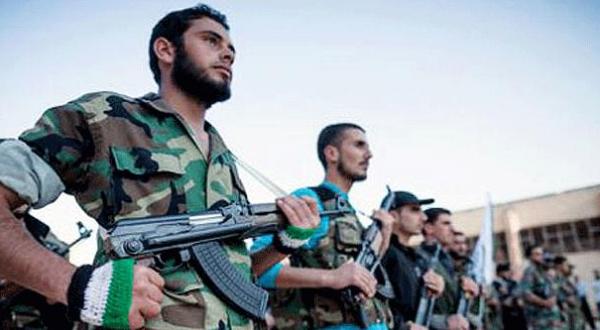“We entered Syria after fighters were 200m away from Damascus”. This is a confession from the Iranian Speaker of Parliament Ali Larijani. However, my topic is not about Iranian intervention because its circumstances and goals are well known. Instead, I would like to point out that Syrian revolutionaries arrived in Damascus before extremists entered Syria.
About two years ago, there were only a few hundred extremist fighters in Syria and most of them were in the southern regions adjacent to Iraq.
We all know that the Free Syrian Army (FSA) was born in 2011 after the peaceful uprisings in Daraa and Damascus to oppose the violence of the regime. It grew rapidly in Aleppo, Hama and other areas and did not give rise to extremist religious slogans or sectarian ones at the time. Rather, the demands were purely nationalistic and most of those who joined the FSA were citizens from different classes in society. Their aim was to rid the country of the terrible security institutions and to end the practices of circles linked to the president which oppressed the people through harassment and persecution.
Two years later the FSA had cut across large distances and seized many areas. During this time, media campaigns were launched against it and its supporters. The intentions of the patriotic project and affiliations to western governments were questioned. Funding and leaders also came under scrutiny. In reality, the arming and supporting of the FSA was going on with the knowledge of all, and under the control of multiple parties known as “the military rooms” in which representatives of western countries were involved. Regrettably, with the progression of the FSA, two important events changed the nature of the conflict in Syria.
For competitive reasons that had narrow interests and due to the idea that the fall of Damascus was imminent, there was increased competition to control the victorious opposition forces. This is why some countries attempted to create opposition loyal to them, supported the establishment of regional, extremist organisations and encouraged the entry of extremist foreigners to fight in Syria. Iran did the same thing when it saw the FSA fighting in the vicinity of Damascus; it hastily sent Hezbollah militias and commissioned the Revolutionary Guards to form extremist groups similar to Iraqi and Afghani organisations and others, and sent them to Syria. This is how the largest terrorist war of its kind in the region occurred on Syrian soil.
